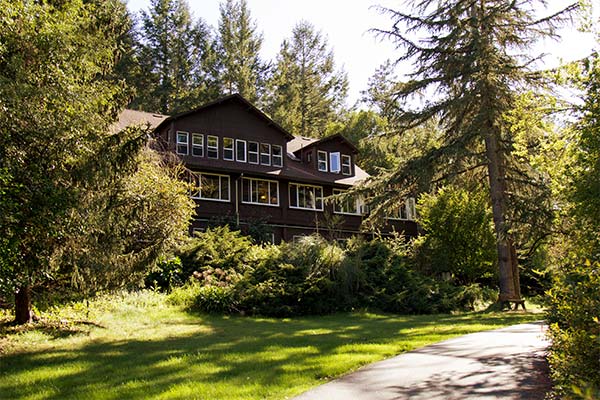Since 1957, Azure Acres Treatment Center has given hope to individuals struggling with a primary substance abuse issue and bipolar disorder while preventing its long-term effects. Azure Acres provides residents high-quality alcohol and drug abuse treatment near Santa Rosa, California.
Understanding Bipolar Disorder
Learn about bipolar disorder
Bipolar and related disorders are a grouping of mental illnesses that bring on extreme upset for those who are afflicted by them. Out of this grouping, the most commonly recognized are bipolar I disorder, bipolar II disorder, and cyclothymic disorder. Each one of these disorders are further explained in the Diagnostic and Statistical Manual of Mental Disorders (DSM-5) and are summarized briefly in the following:
Bipolar I disorder is the most recognized form of bipolar disorder and holds the most severe effects, as the mood changes one goes through can cause serious impairment in their ability to function appropriately. To receive a diagnosis of bipolar I, a person must have gone through at least one manic episode, which can be followed up by or preceded by major depressive or hypomanic episodes. Fluctuations in mood can be dramatic, as those with bipolar I can go from euphoria to anger to depression.
Bipolar II disorder is a mood disorder that includes the presence of a minimum of one major depressive episode and at least one hypomanic episode. When individuals have bipolar II disorder they will go through disturbances in some areas of functioning, but not to the same extent as those with bipolar I do.
Cyclothymic disorder, also known as cyclothymia, occurs when an individual has symptoms of hypomania and depression, however, their symptoms are not strong enough to be considered true episodes of hypomania, mania, or depression. The American Psychiatric Association (APA) states that the primary feature of this disorder is chronic, fluctuating moods that encompass the symptoms of hypomania and depression.
While any form of bipolar disorder can bring on serious distress in the lives of those who are struggling with it, the challenges that they face can be increased if they are also grappling with a drug and/or alcohol addiction. A co-occurring substance use disorder cannot just exacerbate symptoms of bipolar disorder, but they can also trigger the onset of new ones, too. At this point, individuals can also begin to suffer physical side effects as well. Thankfully, however, there are treatments available to help individuals address both of these issues and learn the skills needed to cope. By partaking in treatment such as this, individuals can live happy and well-balanced lives.
Statistics
Bipolar disorder statistics
Within the country, the APA states that nearly 0.6% of the entire population suffers from bipolar I disorder. Approximately 0.8% of the population is afflicted by bipolar II disorder, and the lifetime prevalence of cyclothymic disorder ranges from 0.4% to 1%.
Causes and Risk Factors
Causes and risk factors for bipolar disorder
The causes and risk factors for bipolar disorders can include:
Genetic: Genetics can play a major role in the development of a bipolar disorder. For instance, if an individual has family members who struggle with bipolar disorders, he or she is more likely to as well. When it comes to cyclothymic disorder, a family history riddled with major depressive disorder can trigger the onset of this disorder in an individual. The APA states that genetic factors can also help determine the age in which an individual will start noticing symptoms of this disorder.
Environmental: The environment in which one lives can impact his or her chances of developing bipolar disorder when he or she possesses a genetic predisposition for the illness. The APA reports that bipolar I is most common in high-income countries. Those who are divorced, widowed, or separated have a much greater risk of developing this disorder than those who are married or who have never been married. The link between the two, however, has yet to be determined.
Risk Factors:
- Abusing drugs and/or alcohol can cause the onset of symptoms when one possesses a genetic predisposition for the disorder
- Being widowed, divorced, or separated
- Having a family history of bipolar I, bipolar II, cyclothymic disorder, or major depressive disorder
- Living in a more developed country
Signs and Symptoms
Signs and symptoms of bipolar disorder
The signs and symptoms that one might display when suffering from bipolar disorders can vary based on a number of factors, including the type of bipolar disorder they are facing and whether or not they are going through an episode of depression, hypomania, or mania. Manic episodes are only present in those with bipolar I, so if these symptoms are present, a diagnosis for this form of bipolar disorder would be appropriate. Some of the signs and symptoms during different forms of episodes can include:
Manic episode: The DSM-5 states that manic episodes happen when individuals go through a period of expansive, elevated, or irritable mood that would otherwise be considered abnormal in nature. This mood can last for an entire week, and symptoms will be present for the majority of the day nearly every day. Manic episodes upset one’s mood to a point where he or she is significantly impaired in his or her functioning. Signs of this episode can include:
- Experiencing a flight of ideas
- Racing thoughts
- Euphoric or excessively cheerful mood
- Decreased need for sleep
- Spending an increased amount of time in goal-directed activity
- Participating in activities that have the potential to elicit detrimental consequences, such as going on major spending sprees or engaging in risky sexual behavior
- Excessively talkative
- High level of distractibility
- Inflated self-esteem or sense of grandiosity
- Psychomotor agitation
Hypomanic episode: Hypomanic episodes are like manic episodes, however, they are not as severe and do not last as long. The symptoms of this type of episode must be present for at least four days in a row and occur for most of the day. Symptoms of hypomanic episodes are obvious to others. However, unlike manic episodes, individuals do not struggle with an inability to function. Some of the symptoms of a hypomanic episode can include:
- Lacking a need for sleep
- Talking excessively
- Heightened self-esteem or false sense of grandiosity
- Becoming easily distracted
- Experiencing a flight of ideas and/or racing thoughts
- Participating in high-risk behaviors
Major depressive episode: When individuals suffer a major depressive episode, they will have a minimum of five symptoms within a two-week-long period and will show a change in their regular pattern of functioning. The symptoms of this type of episode can also cause impairment and distress that is significant enough to upset areas of an individual’s life. The APA states the following as being symptoms that can be indicative of a major depressive episode:
- Struggling to make decisions
- Experiencing recurrent thoughts of death
- Fatigue or extreme loss of energy
- Diminished ability to concentrate
- Noticeable change in appetite and subsequent weight loss or weight gain
- Psychomotor agitation or retardation
- No longer engaging in activities that one once enjoyed
- Struggling with insomnia or hypersomnia nearly every day
- Experiencing excessive and/or inappropriate guilt
- No longer demonstrating an interest in things that were once found pleasurable
- Suffering from a depressed mood most of the day, nearly every day
- Feelings of worthlessness
Effects
Effects of bipolar disorder
When individuals battle bipolar disorders and do not obtain the correct treatment, they are likely to go through a number of upsetting effects, including:
- Occupational struggles, which can lead to job loss and subsequent financial struggles
- Financial turmoil as a result of spending excessive amounts of money during manic or hypomanic episodes
- Engaging in self-harming behaviors
- Suffering from suicidal thoughts or engaging in suicidal behaviors
- Disturbances within interpersonal relationships
- Familial strife
- Worsening of symptoms
- Beginning to abuse drugs and/or alcohol
- Marital discord
- Cognitive impairments
Co-Occurring Disorders
Bipolar disorder and co-occurring disorders
The APA states that co-occurring disorders are common in individuals who are suffering from bipolar disorders. Co-occurring substance use disorders specifically are cited as being common in those who struggle with this illness. Some examples of the many co-occurring conditions that one can face with each form of bipolar disorder can include:
Bipolar I disorder: Roughly three-fourths of individuals who struggle with bipolar I also struggle with anxiety disorders such as social anxiety disorder, panic disorder, and specific phobia. Other disorders they might face can include:
- Attention-deficit/hyperactivity disorder (ADHD)
- Alcohol use disorder
- Other substance use disorders
- Intermittent explosive disorder (IED)
- Oppositional defiant disorder (ODD)
- Conduct disorder
Bipolar II disorder: Studies have shown that those with bipolar II are more likely to face one or more co-occurring conditions. The APA reports that 60% of those with this form of bipolar disorder often battle three or more of the following co-occurring disorders:
- Anxiety disorders
- Eating disorders
- Substance use disorders
Cyclothymic disorder: Those who have cyclothymic disorder tend to grapple with the following co-occurring conditions:
- Substance use disorders
- Sleep disorders
- Attention-deficit/hyperactivity disorder (ADHD)











